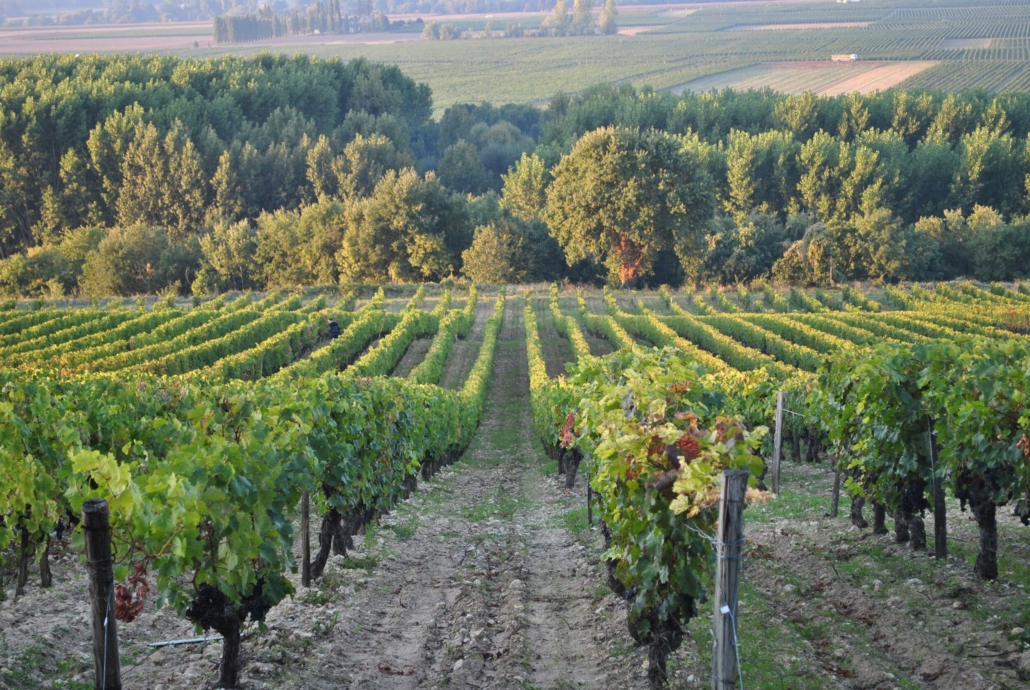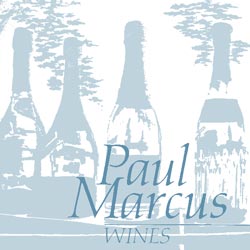Cerasuolo d’Abruzzo—Pairs Well with Thanksgiving and Sonny & Cher’s All I Ever Need Is You
 I often hesitate when people ask me what my favorite wine is. My preference goes in phases, and there is just so much good wine out there! You could spend your whole life tasting through the native grapes of Italy alone. But if I had to pick one wine to drink forever—as much as it pains me to exclude all the wonderful and infinite wines of the world—it would be Italy’s undervalued and inconspicuous Cerasuolo d’Abruzzo.
I often hesitate when people ask me what my favorite wine is. My preference goes in phases, and there is just so much good wine out there! You could spend your whole life tasting through the native grapes of Italy alone. But if I had to pick one wine to drink forever—as much as it pains me to exclude all the wonderful and infinite wines of the world—it would be Italy’s undervalued and inconspicuous Cerasuolo d’Abruzzo.
Made with the montepulciano grape, Cerasuolo means “cherry-red” or “cherry-like,” referencing both the color and general flavor profile of the wine. This magenta-hued rosé, which sometimes poses as a very light, slightly tannic red, is a chameleon—it goes with almost anything. With the Thanksgiving spread being both a predictable and unpredictable myriad of sweet, salty, herby, and tangy, this wine is so incredibly versatile that it will adapt to almost any bite. The marshmallow-on-top is that it’s simply and unequivocally delicious and is sure to please whoever takes a sip.
At Paul Marcus Wines, there is unanimous consensus among buyers and staff that Cerasuolo d’Abruzzo rocks our socks—so much so we often carry multiple options from different producers. We think the three detailed below drink ultra tasty, yet differently enough that they all deserve a place on your table for the Thanksgiving holiday (and, frankly, year-round).
Cerasuolo, All I Ever Need Is You.
Torre dei Beati
Torre dei Beati’s next-door neighbor is arguably the most famous wine grower in Abruzzo—Eduardo Valentini. If you can even find a bottle of Valentini, you’ll be lucky if you spend less than $200. Torre dei Beati offers a range of classic Abruzzese wines from the same terroir for far less. Montepulciano is so vigorous that it can (and often is) boring or flabby—hence our association with a generic table wine. But when yields are curbed, along with organic and intentional grape growing in this grand-cru area of Loreto Aprutino, the difference is uncanny.
The estate is certified organic, and the combination of elevation and clay-limestone soils ensures delicacy and elegance—in addition to careful farming, limited yields, and minimal cellar tinkering. The final wine is a result of saignée, blanc de noir, and maceration, all blended into one dynamic wine. You’ll find cherry Jolly Rancher, blood orange, grapefruit, saline minerality, and deep, complex, nuanced hints of lavender and rose.
Tiberio
Azienda Agricola Tiberio had late beginnings, at least when you compare their story and trajectory to historic and family-crested cantine (wineries). About 25 years ago, Riccardo Tiberio jumped at the opportunity to purchase eight hectares of old-vine Trebbiano Abruzzese, understanding the grape’s potential (the same grape that brought widespread acclaim to Valentini). In 2008, his children Cristiana and Antonio took over. Cristiana is a chemist by trade, and she approaches her winemaking with the same methodical curiosity, while Riccardo spends his days in the vineyards.
This Cerasuolo is true to the Abruzzese tradition in that it is rich and dark. The tannin is surprisingly soft considering how dark the wine is, but it’s still a wine that will hold up through your entire meal. With notes of red cherry, petrichor, sage, and antique rose, it is soft and round.
Amorotti
Amorotti is a young winery that has deep roots in the farming history of Abruzzo. It is run by Gaetano Carboni, a lawyer who chose to dedicate himself to his family farm instead of practicing law. (Amorotti is the maiden name of Carboni’s mother.) In 1905, his grandfather was the first Italian extra-virgin olive oil producer to export to the U.S. Today, the family runs an olive oil museum in an ancient castle in the heart of the central Abruzzo town of Loreto Aprutino, displaying old production methods, vintage pictures, and tools.
The vineyards have belonged to the Amorotti/Carboni family for more than a century, and the wine is produced in the same cavernous cellar that the family has always used for their personal consumption. In 1992, Gaetano refurbished the cellar, and a few years later, he started uprooting old vines to plant new stock. Only recently did he decide to start bottling the best grapes they harvest, and the 2016 vintage was his first release. Carboni also continues to produce olive oil to this day, and together with his wife, he runs an agriturismo with a focus on contemporary art where they host a series of artists-in-residence programs. The entire property is certified organic.
Amorotti’s Cerasuolo is intentionally more serious and age-worthy than the other two. It is more reductive and flinty, and amongst wine pros is compared to the big names of Abruzzo: Valentini and Emidio Pepe. Pleasant smoky reduction dissipates to reveal dried sage, wild strawberries, stone dust, and violet, with salty minerals to balance. Crisp wild berry and blood orange complete the picture.

All these Cerasuolo selections use organic grapes and apply minimal intervention in the cellar, with only native yeast and spontaneous fermentation. Some might use the term “natural” to describe these methods. However, these wines are not “natty” and display no flaws. (Yes, it is possible to drink natural wine that doesn’t taste like burning manure.)
These Cerasuoli will make a convert out of you, whether you swing natty or not. If you’d like to sample them all, we are currently offering a 15 percent discount on our Cerasuolo three-pack. So bust out the Sonny & Cher, and learn more about this fascinating DOC.
— Emilia Aiello
California Cool—Restraint in the Golden State
The Turkey Day table is often such a super abundance of foods that you must go basic when pairing wine. How do we survive this? Our advice is always the same—drink what makes you happy. But for those who believe a national holiday deserves a national drink, we offer some suggestions.
Often, California wine regions are drawn over-broad and without homogeneity of values or style, resulting in useless generalizations about the wines. But occasionally, we get it right, and carving the West Sonoma Coast out of the too large Sonoma Coast AVA has made the label meaningful. The area is so cool and the fog and breeze off the ocean so consistent that ripening pinot above 13 percent potential alcohol is a challenge, not a given.
And it just so happens that turkey and cranberry pair very well with the less-oaked, red-spectrum fruits you consistently get from these wines. We have some of the best examples from the West Sonoma Coast region—Peay and Occidental come to mind, but we have many other options.
Some would say there’s no more American wine than zinfandel; it has proved capable of thriving in California longer than any other grape. Another victory in meaningful wine labels comes from the new Mokelumne River AVA, a sub-zone of Lodi. If you remember Lodi as shorthand for very ripe and alcoholic wines, you’ll be quite surprised by what’s currently going on.
I thought Arnot-Robert’s exciting Kirschenmann Vineyard zin was an outlier, more a product of that winery’s style than an exemplar of place. But now I’m not sure. Bedrock’s Katushas’ Vineyard is in the same area (and also well more than 100 years old) and is similarly delicious—dark-fruited and gently textured, yet with freshness and not heavy. The farmer most associated with preserving ancient vineyards in California, Tegan Passalacqua, has taken special interest in the area and is making wonderful wines under his Sandlands label. All would make great selections for your holiday feast.
— David Gibson
Chinon—Gem of the Loire
Once considered a worthy rival to Bordeaux, the Chinon appellation sits in the heart of the Loire Valley, where it is exposed to both cooling coastal breezes and inland warmth. Almost all of the wine produced in Chinon is cabernet franc, save for a tiny output of chenin blanc. Cab franc from Chinon is a study in balance—fresh and vibrant, but often with considerable depth, and boasting a range of flavors from fruity to savory to herbaceous to earthy.

the Baudry estate
At Paul Marcus Wines, one of our favorite Chinon producers is Bernard Baudry, who owns 32 hectares of vineyards in the AOC and offers a variety of distinct cuvées. ‘Les Grézeaux,’ the domaine’s oldest plot (more than 60 years), is located in the plains near the Vienne River, where the gravelly soils produce wines with a velvety texture and aromatic lift. It has enough meat on its bones to stand up to heartier fare, but the smooth tannins and modest 12.5 percent alcohol allow it to pair eloquently with a whole host of dishes. We also have Baudry’s stunning ‘La Croix Boissée,’ which comes from further up the slope, where Chinon’s renowned limestone-rich soil (called tuffeau) is prevalent. A wine of intensity, gracefulness, and complexity, it is a shining example of what Chinon can offer.
Domaine Philippe Alliet is another esteemed Chinon producer, and their wines tend to come off as a bit “cleaner” than that of other producers in Chinon—not as leafy and earthy, not as meaty, but pure and precise. In addition, we have the ‘Varesnes’ offering from Domaine Jourdan, which comes from a part of the plain where the soil is clay-heavy, giving the wine a notably spicy tinge. Fermented in steel and aged in concrete, it is a structured and mineral wine, but the omission of any oak helps the wine maintain elegance and equilibrium.
— Marc Greilsamer
